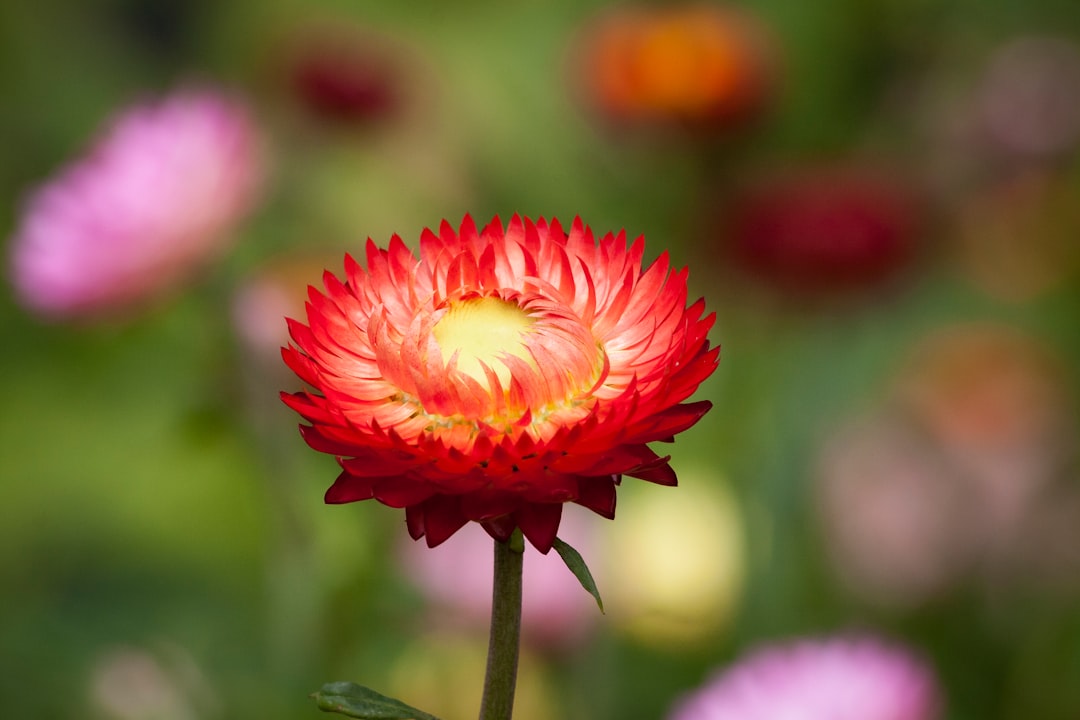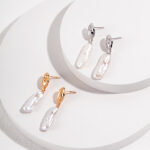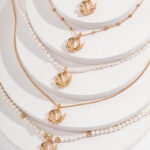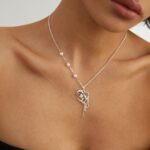The history of natural pearl jewelry is extensive and captivating, spanning millennia in the past. Pearls have long been valued for their beauty and rarity, and in many historical cultures, they have served as a status and money symbol. This article will discuss the many kinds of natural pearl jewelry, their historical and cultural significance, and how to preserve and reinvest in these classic pieces. A timeless and sophisticated piece of jewellery, natural pearl bracelets can enhance any ensemble.
From delicate single-strand bracelets to more complex designs with numerous strands & intricate clasps, they are available in a range of styles. Natural pearl bracelets look great when worn alone for a minimalist style or stacked with other bracelets for a more layered, bohemian aesthetic. There are so many different ways to wear natural pearl bracelets with different ensembles.
They look stunning when worn with formal evening wear, but they can also be worn with casual clothing to add a touch of sophistication. A timeless accessory, natural pearl bracelets have been worn by many famous people throughout history, such as Coco Chanel, Audrey Hepburn, and Princess Diana. For those who want something different from the conventional diamond or gemstone rings, freshwater pearl rings are a stunning and distinctive option. The inherent beauty and luster of freshwater pearl rings are what distinguish them. Every freshwater pearl ring is genuinely one-of-a-kind since every pearl is different, having its own shape, size, & color.
Freshwater pearl rings are available in a wide variety of styles and configurations. A cluster of pearls or a floral design may be found on some, while others have a single pearl set in a straightforward band. For extra sparkle, the settings can be adorned with diamonds or other gemstones and made of a variety of metals, including platinum, silver, or gold. Take your preferences and sense of style into account when selecting the ideal freshwater pearl ring for you.
| Ancient Times | Mesopotamia, Egypt, India | Natural pearls were highly valued and used as adornments for royalty and nobility. |
| Medieval Period | Europe, Middle East | Natural pearls were considered a symbol of wealth and power and were often used in religious artifacts. |
| 16th-19th Century | South America, Caribbean, Gulf of Mexico | The discovery of new pearl beds led to an increase in the availability of natural pearls and their popularity among the wealthy. |
| 20th Century | Japan, Australia | The development of cultured pearls made natural pearls less common and even more valuable. |
Think about the size and shape of the pearl, along with the metal and setting that best complement your skin tone and hand shape. Do you prefer a classic & timeless design, or are you more drawn to something modern and unique? Any occasion is appropriate for wearing pearl earrings, which are a classic and adaptable piece of jewellery. Every taste and preference can be satisfied with a style, ranging from basic pearl studs to intricate chandelier designs. Proportion and balance are crucial factors to take into account when selecting the ideal style of pearl earrings for your face shape. Having a round face, for instance, can be accentuated and given a more balanced appearance with the help of long, dangling pearl earrings.
Conversely, more delicate and smaller pearl studs can help to soften the features on a heart-shaped face. Pearl earrings have long been associated with numerous well-known people in history. Pearls are now widely recognized as a symbol of sophistication and elegance thanks to the efforts of famous ladies like Jackie Kennedy and Marilyn Monroe. Every jewelry collection must include the timeless pearl necklace.
It is a classic piece that goes well with everything, from an elegant evening gown to a basic white t-shirt. The classic pearl necklace has a rich history and symbolic meaning that dates back to ancient times, when royalty and nobility wore them as a sign of their wealth and status. Pearl necklaces are available in a variety of lengths and styles, so there are countless ways to wear and combine them with other ensembles. A long, layered pearl necklace can give an eclectic, bohemian vibe, while a choker-length pearl necklace can add a touch of elegance to a casual ensemble.
Think about the occasion and your own style when selecting a pearl necklace. A pearl necklace with a single strand is a timeless and adaptable option, but one with multiple strands can be a striking and eye-catching piece of jewelry. The beauty & symbolic meaning of pearls have made them valuable and useful in many cultures & eras. Pearls were highly valued in the past for their rarity and luster, and it was thought that they were the tears of the gods.
They were worn by royalty and nobility as a sign of wealth and power, and they were frequently offered to the gods. Pearls are connected to innocence and purity in many different cultures. On their wedding day, brides frequently wear them as a symbol of their virginity and the start of a new chapter in their lives.
In traditional medicine, pearls are utilized to treat a variety of illnesses because they are thought to have healing properties. Pearls have been associated with many notable people throughout history. Pearl necklaces and earrings were frequently worn by Queen Elizabeth I of England, & the trend of pairing pearls with casual clothing was popularized by Coco Chanel, who also made pearls affordable for women from all social classes.
A sand grain or a parasite entering an oyster or mollusk can cause an irritation that results in the formation of a natural pearl. The oyster produces layers of nacre, a calcium carbonate and protein mixture, in reaction to the irritant in order to coat it and form a pearl. The pearl that is produced after this lengthy process is rare and priceless. It may take several years.
It takes a lot of time and care to cultivate natural pearls. A tiny fragment of mantle tissue from a donor oyster is carefully inserted into the recipient oyster, which subsequently creates a pearl sac around the tissue. When the oyster is ready to have its pearl harvested, it is transferred to a controlled environment and given care and nurturing. It is crucial to understand that cultured pearls and natural pearls are not the same. Although cultured pearls are created with human assistance, natural pearls form on their own without human intervention.
Cultured pearls have the same beauty & luster as natural pearls, but they are more accessible and less expensive. Many well-known people have been observed wearing jewelry made of real pearls throughout history. Along with having a big influence on fashion trends, these people also made political & message-related statements with their jewelry. One such person is England’s Queen Elizabeth I, who was frequently pictured donning ornate pearl necklaces and earrings. She flaunted her wealth and status while also conveying an air of authority and power via her jewelry.
Chanel is another famous person who wore jewelry made of real pearls. She defied convention by being the first to popularize the look of wearing pearls with casual clothing. It is impossible to overstate the historical significance of their jewelry. Because of their decision to wear jewelry made of real pearls, fashion trends were influenced and pearls’ status as a sophisticated and elegant material was cemented.
To guarantee the longevity and elegance of your natural pearl jewelry, proper upkeep and care are important. The following hints and techniques will assist you in taking proper care of your pearls:1. Prevent your pearls from coming into contact with strong chemicals like hairspray, perfume, or cleaning supplies. These substances have the potential to harm nacre and dull pearl shine. 2.
Pearls should be cleaned on a regular basis to get rid of any buildup of dirt or oils using a gentle, moist cloth. As they may scratch the pearls’ surface, stay away from using abrasive materials or harsh cleaning agents. 3. To avoid scratching other jewelry, keep your pearls in a soft pouch or a different section of your jewelry box. The pearls may get damaged or discolored if they are kept in a humid or direct sunlight setting. 4.
Wearing pearls while taking a shower, swimming, or doing anything else that could expose them to a lot of moisture or heat is not recommended. Due to their fragility, pearls are easily harmed by heat and moisture. You can make sure that your natural pearl jewelry stays stunning and glossy for many years to come by adhering to these straightforward instructions.
Both fashion enthusiasts and collectors would be wise to invest in natural pearl jewelry. The value of natural pearls only rises with time, making them rare and precious. Natural pearl jewelry is classic and in demand all the time, in contrast to other forms of jewelry that might go out of style or lose value. There are a number of things to take into account when evaluating natural pearl jewelry.
This encompasses the pearls’ dimensions, form, hue, sheen, and texture. A pearl’s value increases with its size and roundness. Also thought to be of superior quality are pearls with a high luster & few surface flaws. Natural pearl jewelry is valuable from a historical and cultural standpoint in addition to being exquisite and rare.
A piece of natural pearl jewelry is an incredibly meaningful and special investment because it connects you to the rich history and customs surrounding pearls. In summary, the timeless beauty and rich history of natural pearl jewelry have captivated people all over the world. When it comes to wearing and coordinating natural pearl jewelry, the options are endless, ranging from rings & bracelets to necklaces and earrings. Purchasing natural pearl jewelry is an astute decision that will delight and adorn you for years to come, regardless of your preference for fashion.






